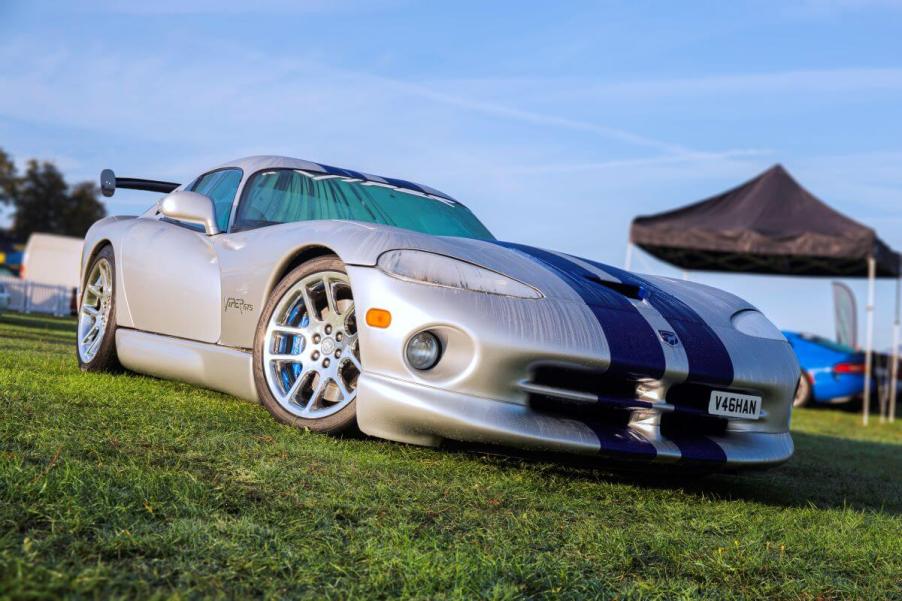
An Unwanted Cost of $1.50 Left the First-Generation Dodge Viper With Actual ‘Blinker Fluid’
Car people often joke about adding blinker fluid to repair a faulty or unused turn signal. Then there’s the requisite muffler-bearing joke whenever there’s a squeal from under the hood, and one should never forget to put new summer air into their car tires each spring. However, jokes aside, the first-generation Dodge Viper has a sight glass built into the headlamp assembly that appears to indicate its blinker fluid level. Is this a real feature of early Viper models?
Does the first-generation Dodge Viper have blinker fluid?
While there is a fluid-filled glass tube projecting from the headlamps of the first-generation Dodge Viper, it isn’t a blinker fluid level indicator. Instead, those little fluid-filled vials act as a bubble level to ensure the Viper’s headlamps leave the production line at the appropriate height for safe, night-time driving. You might wonder why the leveling bubbles stayed with the car past the end of the production line, and while they serve no purpose after assembly, Dodge decided to save the $1.50 per car it would cost to remove them.
The Viper’s headlamp connection to BMW
Another interesting fact about the first-generation Dodge Viper’s headlamps includes a connection to BMW. The Drive says that before the Viper’s finalized design, General Electric (GE) developed and produced the unique headlamps for the BMW Z1 at GE’s cost. Ultimately, BMW decided on a different design, and GE put the new headlamps in storage.
When Chrysler began shopping for headlights for the forthcoming Dodge Viper, GE dusted off the sporty projector models from the BMW Z1 project. In contrast to the $1.50 per car savings from leaving the level bubbles on the headlamps, using the Z1 headlamps from GE saved the Dodge Viper program an estimated $3.5 million.
Besides blinker fluid, what else is unique about the first-gen Viper?

Chrysler introduced the Dodge Viper to the world at the 1989 Detroit Auto Show as a concept car. The production model Viper RT/10 debuted three years later at the 1992 Detroit Auto Show. First-gen Vipers featured a 400-hp 8.0-liter V10 engine with 465 lb-ft of torque and a six-speed manual shift transmission.
Other unique Viper features lie in its lack of “creature comforts.” For example, the 1992 Dodge Viper carried an MSRP of over $50,000 but did not have glass side windows, air conditioning, a roof, or exterior door handles. The Viper’s 0 to 60 mph sprint took a mere 4.2 seconds, and its top speed exceeded 160 mph. However, a lack of stability control and ABS required drivers to maintain control without even the most fundamental driver assist features, says MotorTrend.
What is it like to drive a first-generation Dodge Viper?
In 2017, the final year of Dodge Viper production, a journalist from Car and Driver stepped back into automotive time to drive a first-gen Dodge Viper RT/10. While the Viper’s finer points include features other than ergonomics and interior design, its racecar-like demeanor makes it easy to overlook its design flaws and lack of comfort.
The Viper reportedly remained glued to the test track, readily transmitting information from the driver to the track and back through the steering wheel. Applying the throttle resulted in pulsating acceleration only overshadowed by the 488-cubic-inch V10’s raucous exhaust note. Finally, although the brake pedal offered little feedback, the Viper’s substantial braking power brought the car down from speed in a hurry.




